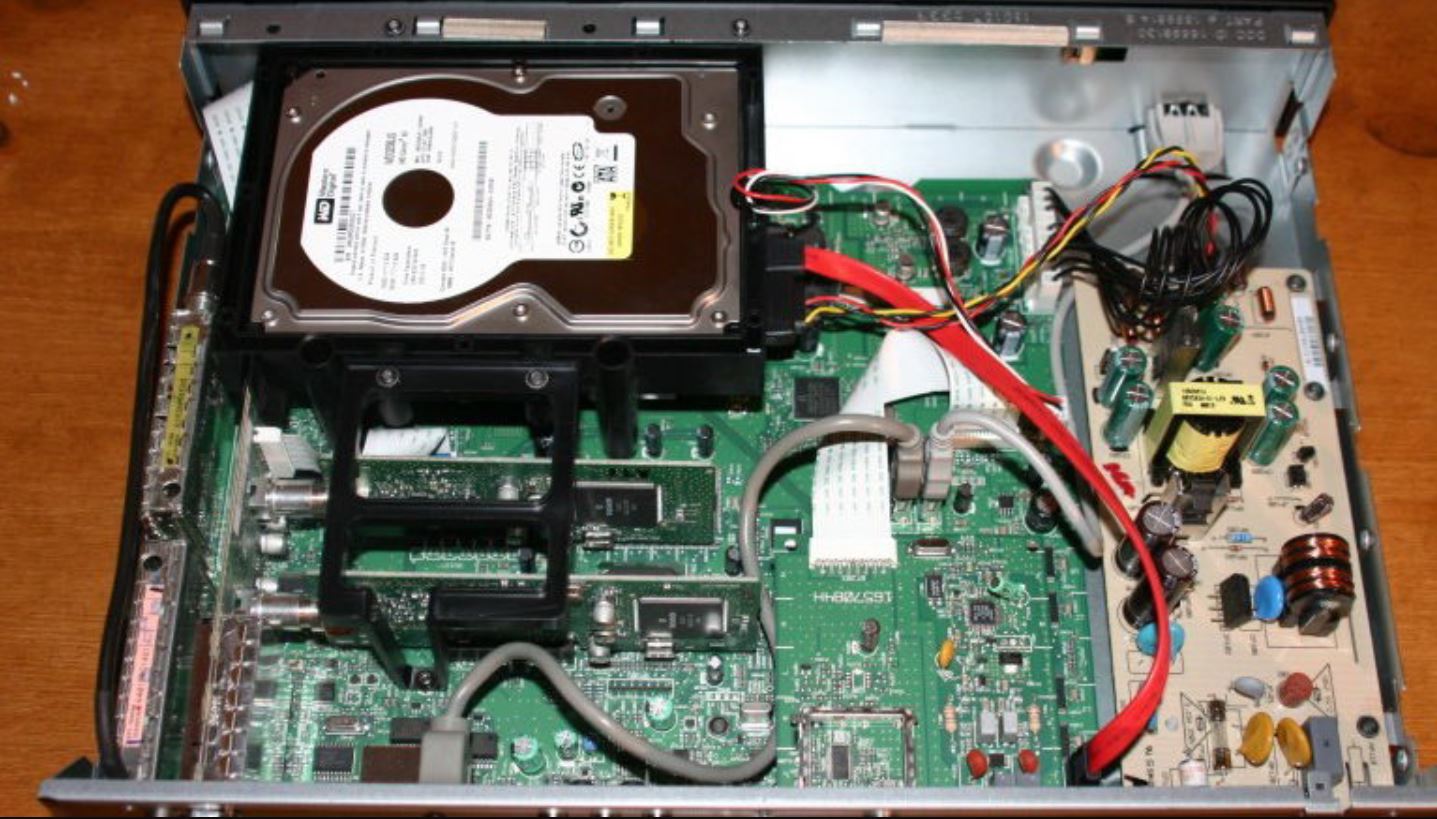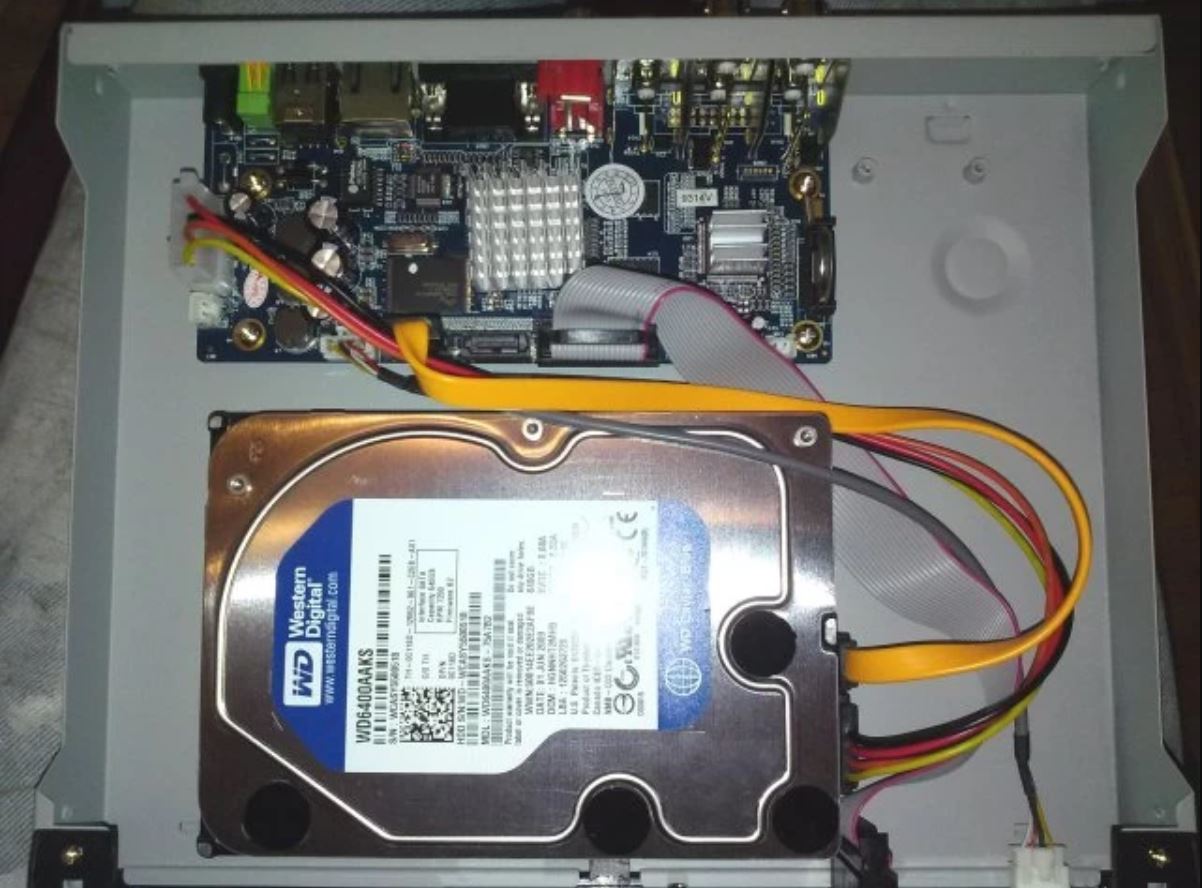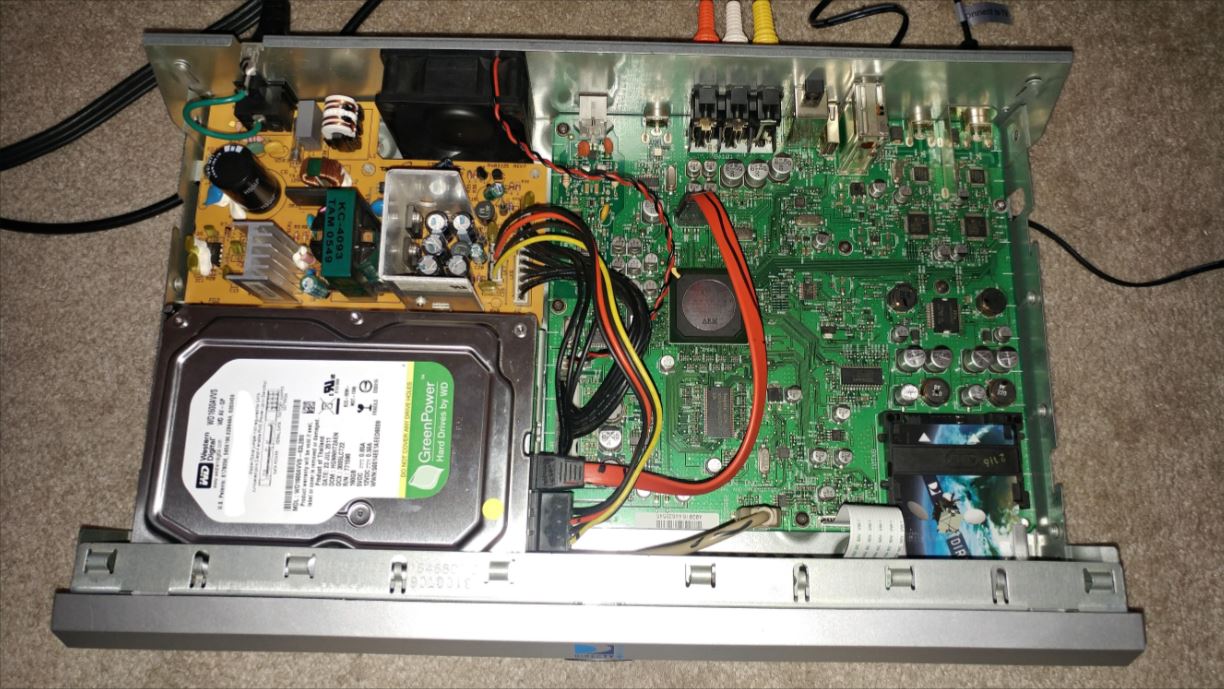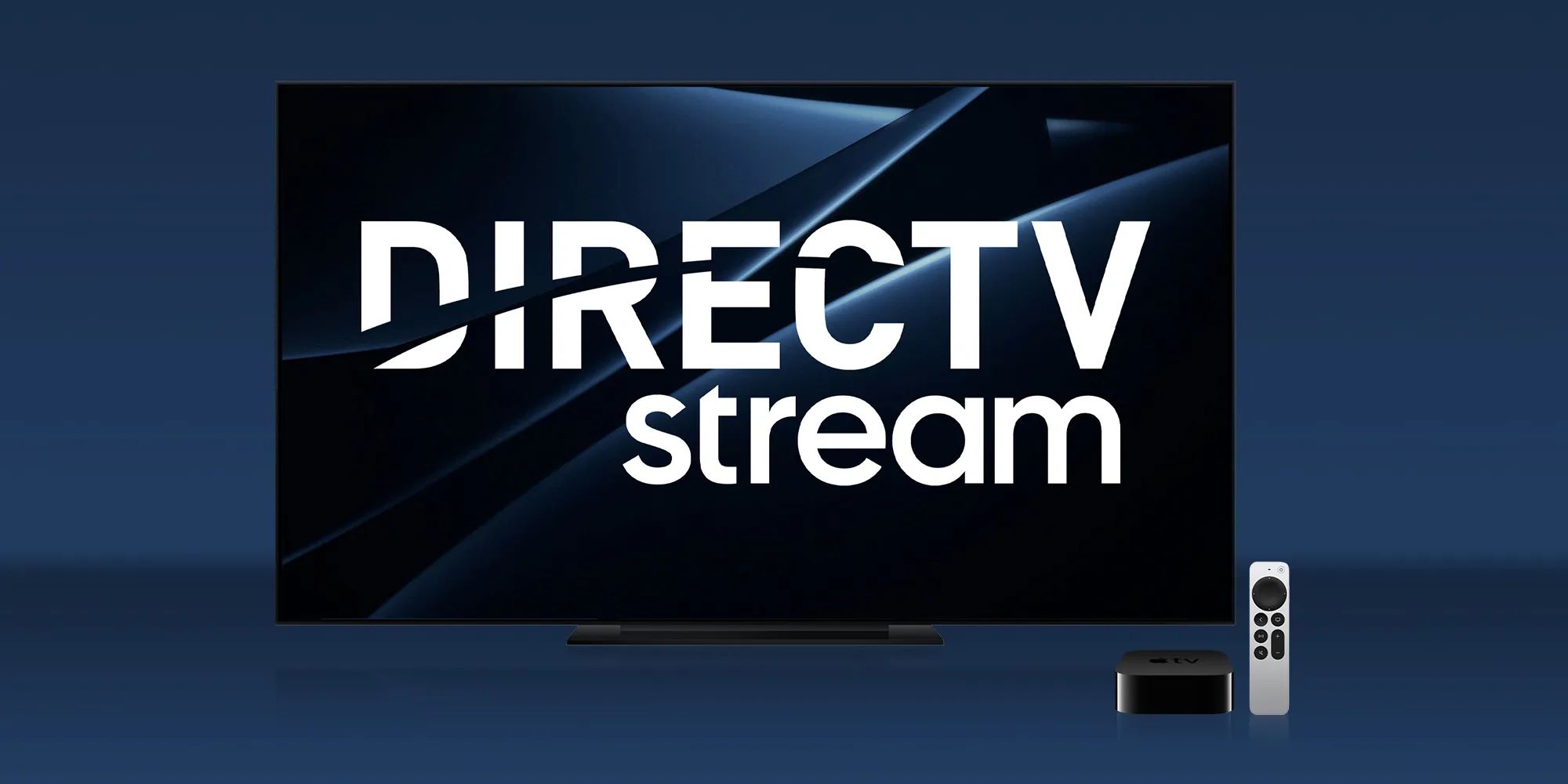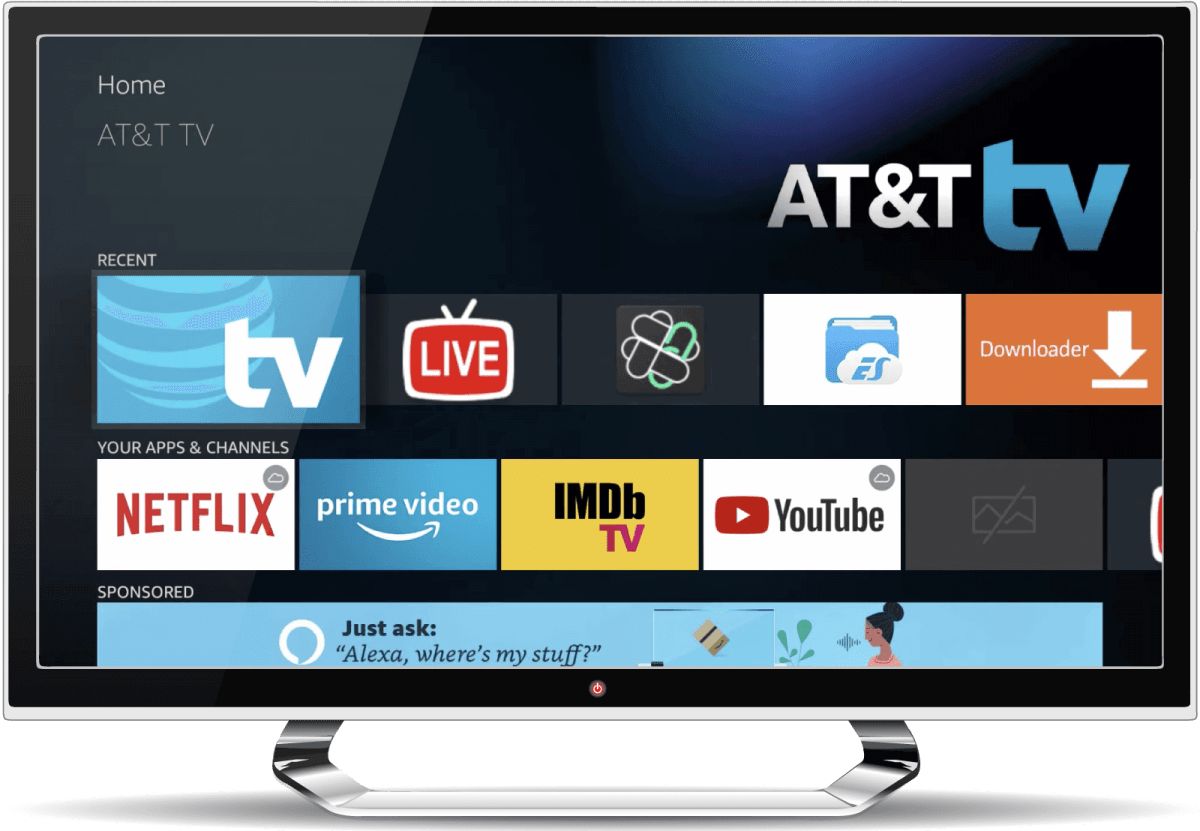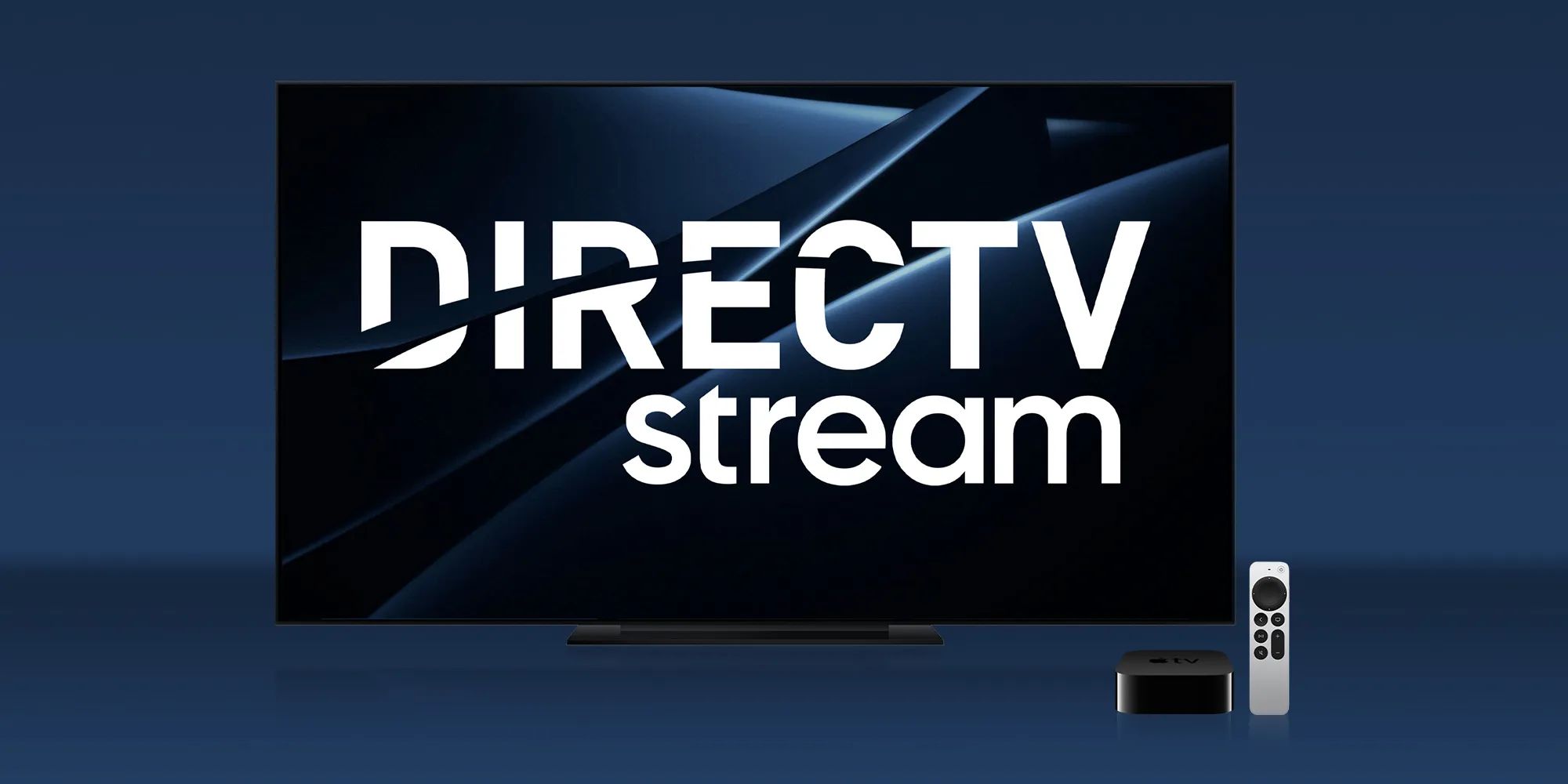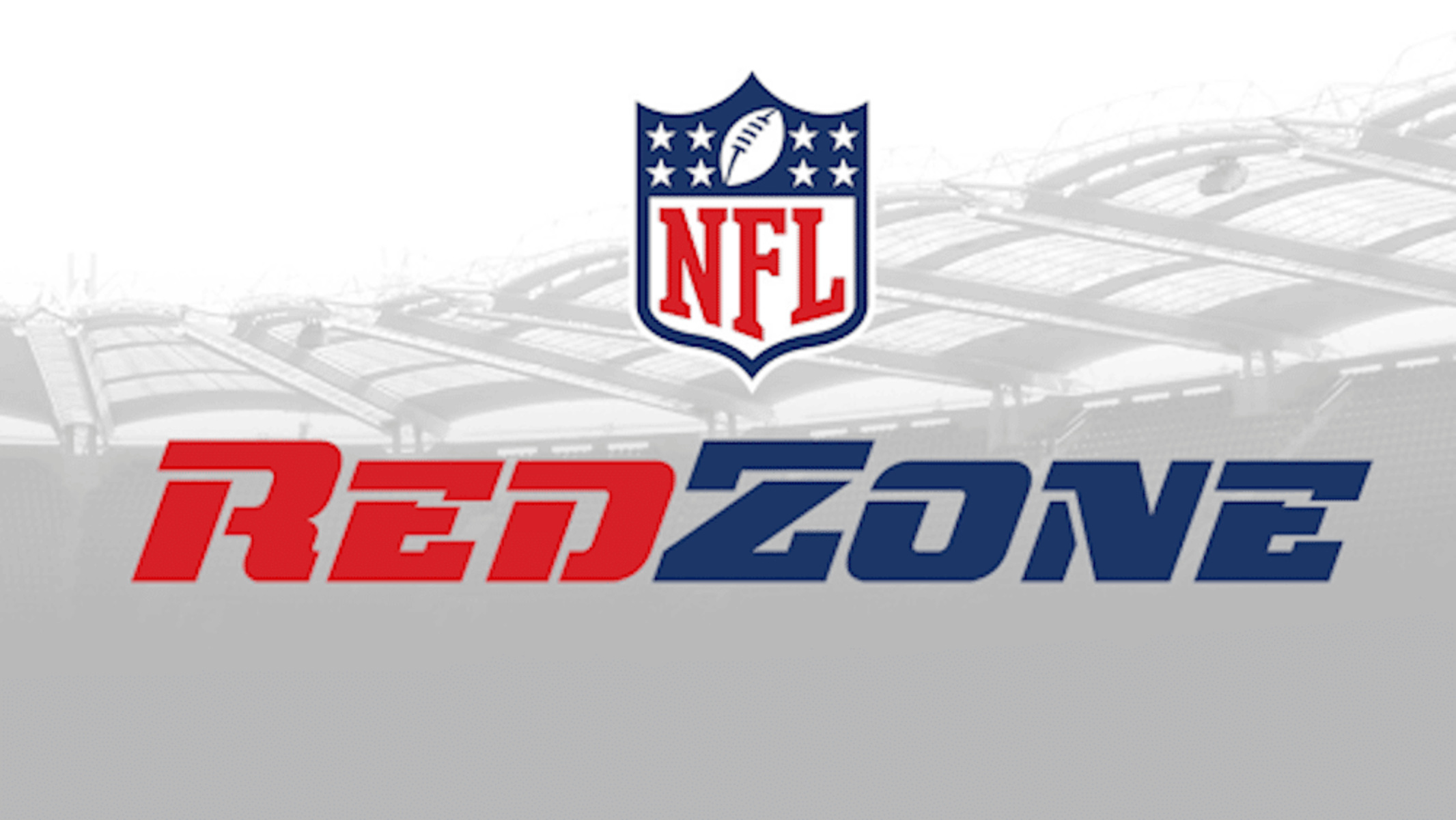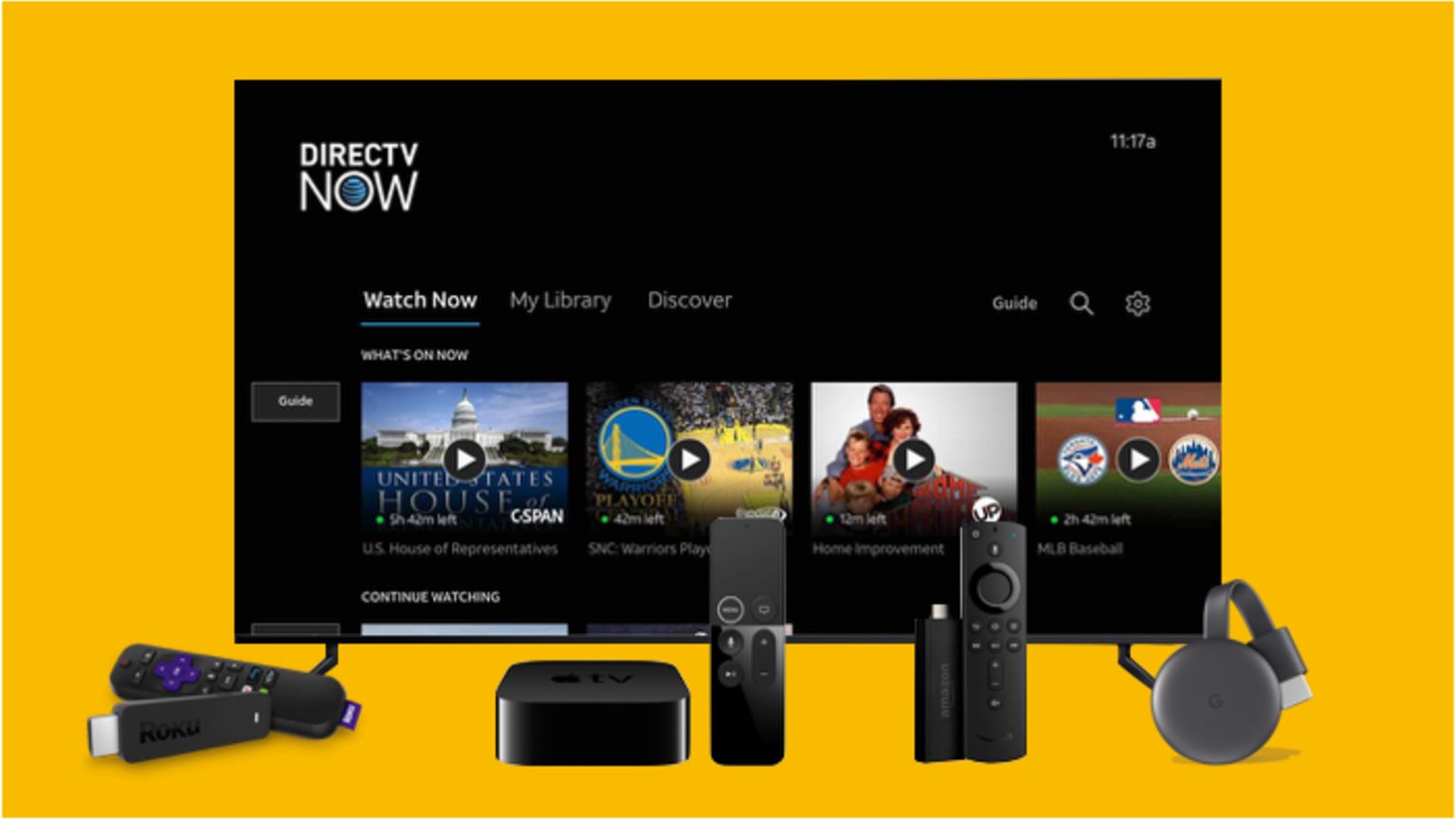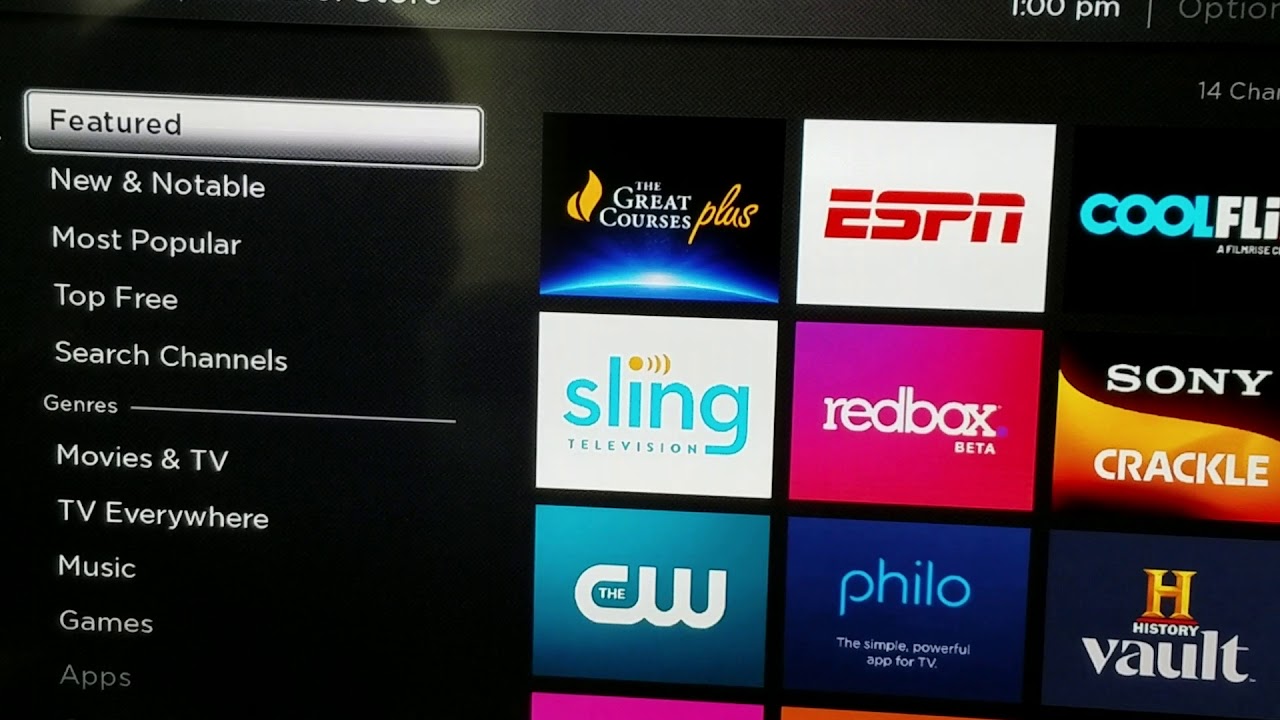Introduction
If you’re running out of storage space on your DirecTV DVR, adding an external hard drive can be a great solution. With an external hard drive connected to your DVR, you can easily expand your storage and ensure that you never miss out on recording your favorite shows and movies. In this guide, we’ll walk you through the step-by-step process of adding an external hard drive to your DirecTV DVR, so you can enjoy more storage space and have all your entertainment at your fingertips.
Before you dive into the process, it’s essential to familiarize yourself with the compatibility requirements and ensure that your DirecTV DVR model supports external storage. Typically, newer models, such as the Genie HD DVRs, offer support for external hard drives. However, it’s always a good idea to check your DVR’s specifications or consult the user manual.
Once you’ve confirmed compatibility, the next step is to select the right external hard drive for your DirecTV DVR. Not all external hard drives are compatible, so it’s crucial to choose one that meets the necessary specifications. We’ll guide you through this selection process, ensuring that you find a compatible and reliable external hard drive for your DVR.
After acquiring the appropriate external hard drive, you’ll need to format it correctly to ensure it works seamlessly with your DirecTV DVR. Formatting will erase any existing data on the drive, so it’s essential to back up any important files before proceeding. Our step-by-step instructions will help you format your external hard drive properly and get it ready for use with your DVR.
Once the formatting is complete, we’ll walk you through the process of connecting the external hard drive to your DirecTV DVR. This step may involve using USB cables or following specific instructions depending on your DVR model. By following our instructions, you’ll be able to establish a secure and reliable connection between your DVR and the external hard drive.
After connecting the external hard drive, you’ll need to set up your DirecTV DVR to recognize it as additional storage. This may involve navigating through the DVR’s settings menu and making specific adjustments. Our guide will provide clear instructions on how to perform this setup, ensuring that your DVR can fully utilize the extra space provided by the external hard drive.
With your DirecTV DVR now recognizing the external hard drive, you can start transferring content from your DVR’s internal storage to the external drive. This handy feature allows you to free up space on your DVR while still having access to your favorite recorded shows and movies. We’ll guide you through this process, making it quick and effortless.
Once all the steps are complete, you can sit back, relax, and enjoy the benefits of your expanded storage space on your DirecTV DVR. The added capacity will provide you with more room for recording, allowing you to save all your must-watch programs without worrying about running out of space.
Now that we’re familiar with the process, let’s dive into the details of each step and get you started on adding an external hard drive to your DirecTV DVR.
Step 1: Check Compatibility
Before you begin the process of adding an external hard drive to your DirecTV DVR, it’s crucial to ensure that your DVR model is compatible with external storage. Not all DVR models have the capability to connect an external hard drive, so it’s important to check this before proceeding.
You can easily check the compatibility of your DirecTV DVR by referring to the DVR’s specifications or consulting the user manual. Look for information regarding external storage support or USB connectivity. Newer models, such as the Genie HD DVRs, usually offer support for external hard drives, making it easier to expand your storage capacity.
If you’re unable to find the information in the specifications or manual, you can also reach out to DirecTV’s customer support for assistance. They can provide you with the necessary information and guide you in finding a compatible external hard drive for your DVR.
It’s worth noting that even if your DVR model supports external storage, there may be certain limitations or requirements. For example, there might be a maximum capacity limit for the external hard drive or specific formatting requirements. Make sure to take these factors into account when selecting an external hard drive.
Checking compatibility is a crucial first step to ensure your efforts in adding an external hard drive to your DirecTV DVR are successful. Skipping this step may result in frustration and wasted time if your DVR does not support external storage. So take a few moments to verify compatibility and save yourself any potential headaches down the line.
In the next step, we’ll guide you through the process of selecting the right external hard drive for your DirecTV DVR, ensuring seamless integration and optimal performance.
Step 2: Choose the Right External Hard Drive
Once you’ve confirmed that your DirecTV DVR is compatible with external storage, the next step is to choose the right external hard drive. Not all external hard drives are compatible with DVRs, so it’s essential to select one that meets the necessary specifications.
When choosing an external hard drive for your DirecTV DVR, there are a few key factors to consider:
- Capacity: Determine how much additional storage space you require. Consider the number of shows, movies, and recordings you plan to store on the external drive. Remember that high-definition content generally requires more space than standard definition.
- Compatibility: Ensure that the external hard drive you choose is compatible with your DVR model. The DVR may require specific file system formats, such as FAT32 or NTFS. Check the DVR’s specifications or consult the user manual to determine the compatible formats.
- Speed: Consider the read and write speeds of the external hard drive. Faster speeds will result in quicker data transfers with your DVR, allowing for smoother playback and recording experiences.
- Reliability: Look for a reliable and well-known brand when choosing an external hard drive. You want a drive that will withstand continuous usage and provide long-term reliability.
- Portability: If you plan to move the external hard drive frequently or use it with other devices, consider the size and weight. A portable and compact design makes it easier to carry and connect to multiple devices.
Research different models and read reviews to determine which external hard drive best fits your needs and budget. Pay attention to customer feedback regarding compatibility with DirecTV DVRs to ensure a seamless integration with your system.
Once you’ve selected the ideal external hard drive for your DirecTV DVR, you’ll be ready to move on to the next step: formatting the drive to prepare it for use with your DVR system.
Step 3: Format Your External Hard Drive
Before you can start using your selected external hard drive with your DirecTV DVR, you’ll need to format it to ensure compatibility and proper functionality. Formatting the drive will erase any existing data, so it’s important to back up any important files before proceeding.
The process of formatting your external hard drive will vary depending on your computer’s operating system. Here’s a general guide:
- Windows:
- Connect the external hard drive to your computer using a USB cable.
- Open “My Computer” or “This PC” and locate the external hard drive. Note the drive letter assigned to it (e.g., “E:”, “F:”).
- Right-click on the drive’s icon and select “Format” from the context menu.
- Choose the desired file system format. For compatibility with the DirecTV DVR, you may need to select FAT32 or exFAT.
- Click “Start” to begin the formatting process. It may take some time depending on the size of the drive.
- Once the formatting is complete, safely disconnect the external hard drive from your computer.
- Mac:
- Connect the external hard drive to your Mac using a USB cable.
- Open “Finder” and go to “Applications > Utilities > Disk Utility.”
- In Disk Utility, locate the external hard drive in the sidebar and select it.
- Click on the “Erase” tab.
- Choose the desired file system format. For compatibility with the DirecTV DVR, you may need to select MS-DOS (FAT) or exFAT.
- Click “Erase” to begin the formatting process. Be aware that all data on the drive will be erased.
- Once the formatting is complete, safely eject the external hard drive from your Mac.
After formatting your external hard drive, it will be ready to be connected to your DirecTV DVR. Remember that different DVR models may require specific file system formats, so consult your DVR’s documentation to confirm the required format.
With your external hard drive formatted, you’re now ready to move on to the next step: connecting the external hard drive to your DirecTV DVR.
Step 4: Connect the External Hard Drive to Your DirecTV DVR
Now that you have formatted your external hard drive, it’s time to connect it to your DirecTV DVR. The process may vary slightly depending on your DVR model, but the general steps remain the same.
Follow these instructions to connect your external hard drive to your DirecTV DVR:
- Locate the USB ports: Identify the USB ports on your DirecTV DVR. These ports are typically located on the back or side of the DVR unit. Make sure you have a free USB port available for connecting the external hard drive.
- Power off the DVR: Before connecting the external hard drive, it’s recommended to power off your DirecTV DVR to avoid any potential issues. You can either unplug the power cord from the back of the DVR or use the power button on your remote control to shut it down.
- Connect the external hard drive: Take the USB cable that came with your external hard drive and plug one end into the USB port on the DVR and the other end into the corresponding port on the external hard drive. Ensure that the connection is secure.
- Power on the DVR: Once the external hard drive is connected, power on your DirecTV DVR by plugging it back in or using the power button on the remote control. Allow the DVR to boot up fully.
After following these steps, your external hard drive should now be successfully connected to your DirecTV DVR. However, it’s important to note that some DVR models may require additional setup or configuration steps to recognize and utilize the external storage. Consult your DVR’s user manual or on-screen guide for any specific instructions related to connecting external storage devices.
In the next step, we’ll guide you through the process of setting up your DirecTV DVR to recognize and use the external hard drive for additional storage.
Step 5: Set Up Your DirecTV DVR to Recognize the External Hard Drive
After connecting the external hard drive to your DirecTV DVR, the next step is to set up your DVR to recognize and utilize the added storage space. The process may vary depending on your DVR model, but the general steps to follow are explained below.
Follow these instructions to set up your DirecTV DVR to recognize the external hard drive:
- Access the DVR menu: Using your DirecTV remote control, press the “Menu” button to access the main menu of your DVR. Navigate to the settings or setup section where you can make adjustments to the DVR’s configuration.
- Locate the external storage settings: Look for a section or submenu within the DVR menu that is dedicated to storage or external devices. The exact naming and location may differ depending on your DVR model, but it should be related to managing storage options.
- Select the external hard drive: Within the storage settings, look for an option to designate the external hard drive as the primary or additional storage device. Select the external hard drive from the list of available storage options.
- Format the external hard drive (if required): In some cases, your DVR may prompt you to format the external hard drive before it can be used. Follow the on-screen instructions to format the drive, ensuring compatibility with your DVR.
- Confirm the setup: Once you have selected the external hard drive and made any necessary formatting adjustments, navigate to the confirmation or apply button to save the changes and complete the setup process.
- Restart the DVR: To ensure that the changes take effect, it’s recommended to restart your DirecTV DVR. You can do this by powering off the DVR using the remote control or by unplugging the power cord from the back of the unit. Wait a few seconds and then plug it back in or press the power button to turn it on.
By following these steps, your DirecTV DVR should now recognize the external hard drive as additional storage. It will be ready to store and retrieve recordings, providing you with ample space for all your favorite shows and movies.
Please note that the setup process may be different for each DVR model, so refer to your DVR’s user manual or on-screen guide for any specific instructions or variations related to setting up external storage.
In the next step, we’ll guide you through the process of transferring content from your DirecTV DVR to the external hard drive.
Step 6: Transfer Content from Your DirecTV DVR to the External Hard Drive
Now that your DirecTV DVR recognizes the external hard drive as additional storage, you’re ready to transfer content from your DVR’s internal storage to the external drive. This step allows you to free up space on your DVR while still preserving your favorite shows and movies.
Follow these instructions to transfer content from your DirecTV DVR to the external hard drive:
- Access the DVR menu: Using your DirecTV remote control, press the “Menu” button to access the main menu of your DVR. Navigate to the recorded shows or recorded content section where your DVR’s recordings are stored.
- Select the content to transfer: Browse through the list of recorded shows and movies on your DVR and select the ones you want to transfer to the external hard drive. You may be able to select multiple items at once or transfer them one by one.
- Select the transfer option: Look for a “Transfer” or “Move” option within the DVR menu. This option will allow you to initiate the transfer process from the internal storage to the external hard drive.
- Choose the external hard drive: When prompted to select the destination for the transfer, choose the external hard drive that you connected to your DVR in the previous steps. Confirm the selection to proceed.
- Initiate the transfer: Start the transfer process by selecting the “Transfer” or “Move” button. The DVR will begin transferring the selected content from its internal storage to the external hard drive. The time it takes to complete the transfer will depend on the size and number of recordings being transferred.
- Monitor the transfer process: During the transfer, you may see a progress bar or indicator showing the status of each transfer. Allow the process to complete uninterrupted for the best results.
- Verify the transferred content: Once the transfer is complete, you can check the external hard drive to ensure that the recorded shows and movies have been successfully transferred. Use the DVR menu or a connected computer to access the external hard drive and view the transferred content.
By following these steps, you can easily transfer content from your DirecTV DVR to the external hard drive, creating more space on your DVR for new recordings. This feature allows you to manage your DVR’s storage effectively and maintain access to your favorite entertainment.
It’s worth noting that once the content is transferred to the external hard drive, it can only be accessed through the DVR or a compatible device. Ensure that the external hard drive remains connected to the DVR for seamless access to your recordings.
In the final step of this guide, we’ll recap the process and highlight the benefits of adding an external hard drive to your DirecTV DVR.
Step 7: Enjoy the Additional Storage Space on Your DirecTV DVR
Congratulations! You have successfully added an external hard drive to your DirecTV DVR and transferred content from your DVR’s internal storage. Now, it’s time to reap the benefits of the additional storage space and enjoy the convenience it brings.
With the added storage capacity, you can:
- Record more shows and movies: Never miss out on recording your favorite programs due to lack of space. The extra storage allows you to record more content without worrying about running out of room.
- Store high-definition content: High-definition shows and movies require more storage space than standard definition. With the expanded storage, you can save your favorite HD content without compromising on picture quality.
- Organize your recordings: With more storage space, you can keep your recordings neatly organized without the need to delete older episodes or movies. Easily access and watch your saved content at any time.
- Reduce DVR clutter: By transferring content to the external hard drive, you free up space on your DVR’s internal storage, preventing it from becoming overcrowded and slowing down the system’s performance.
- Access content on multiple devices: Some external hard drives are compatible with various devices, allowing you to access your recorded content on other compatible devices, such as computers or smart TVs, if supported.
With the expanded storage space on your DirecTV DVR, you can now confidently record, store, and access your favorite shows and movies without the worry of limited space. Enjoy the convenience and flexibility that additional storage provides, ensuring that you never miss out on your preferred entertainment.
Remember to keep your external hard drive connected to your DVR for seamless access to your stored content. Regularly manage your recordings, deleting or transferring content as necessary to maintain a healthy balance of available space.
Thank you for following this guide on how to add an external hard drive to your DirecTV DVR. We hope this step-by-step process has been helpful in expanding your DVR’s storage capacity and enhancing your entertainment experience.
Conclusion
Adding an external hard drive to your DirecTV DVR is a simple and effective way to expand your storage space and maximize your entertainment options. By following the step-by-step process outlined in this guide, you can easily connect an external hard drive, format it correctly, and transfer content from your DVR’s internal storage.
Checking the compatibility of your DVR model and selecting the right external hard drive are important initial steps. Ensuring the compatibility and reliability of the external hard drive helps optimize its performance and ensures a smooth integration with your DVR system.
Formatting the external hard drive prepares it for use with your DirecTV DVR, erasing any existing data and configuring it to the necessary file system format. This step is crucial to ensure the drive is properly recognized and utilized by the DVR.
Connecting the external hard drive to your DirecTV DVR and setting it up to recognize the added storage space are essential for seamless integration. Following the instructions provided by your DVR’s menu or user manual will help establish a solid connection and allow you to utilize the additional storage for recording and storing your favorite shows and movies.
Transferring content from your DVR to the external hard drive not only frees up space on your DVR’s internal storage but also ensures you have access to your recorded content whenever you want. This convenient feature allows you to manage your DVR’s storage effectively and avoid losing any cherished recordings.
With the additional storage space on your DirecTV DVR, you can now enjoy a wealth of entertainment options without worrying about running out of space. Record more shows, store high-definition content, and keep your recorded content organized and easily accessible.
Remember to regularly manage your recordings and maintain a healthy balance of available space on the external hard drive. Deleting or transferring content as necessary will ensure you have room for new recordings and maintain optimal performance.
We hope this guide has been helpful in expanding your DirecTV DVR’s storage capacity and enhancing your entertainment experience. Enjoy the benefits of added space, uninterrupted recording, and convenient access to all your favorite shows and movies.







